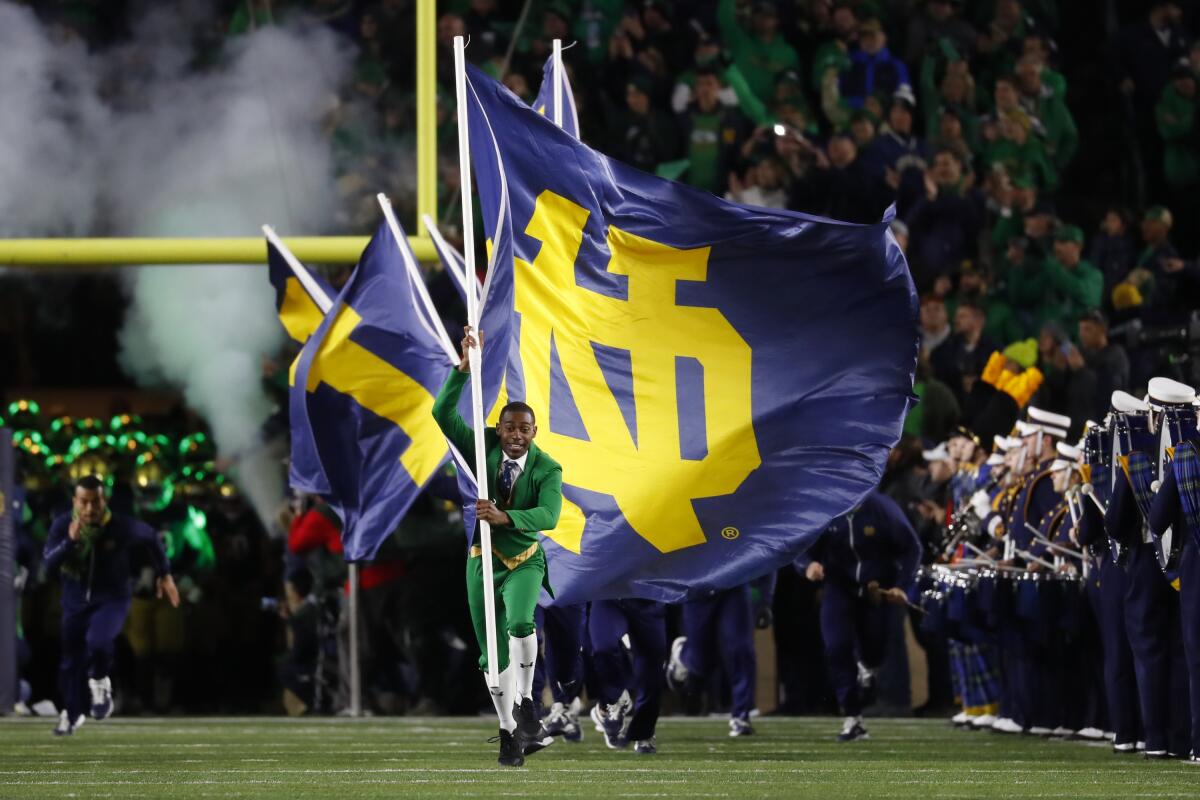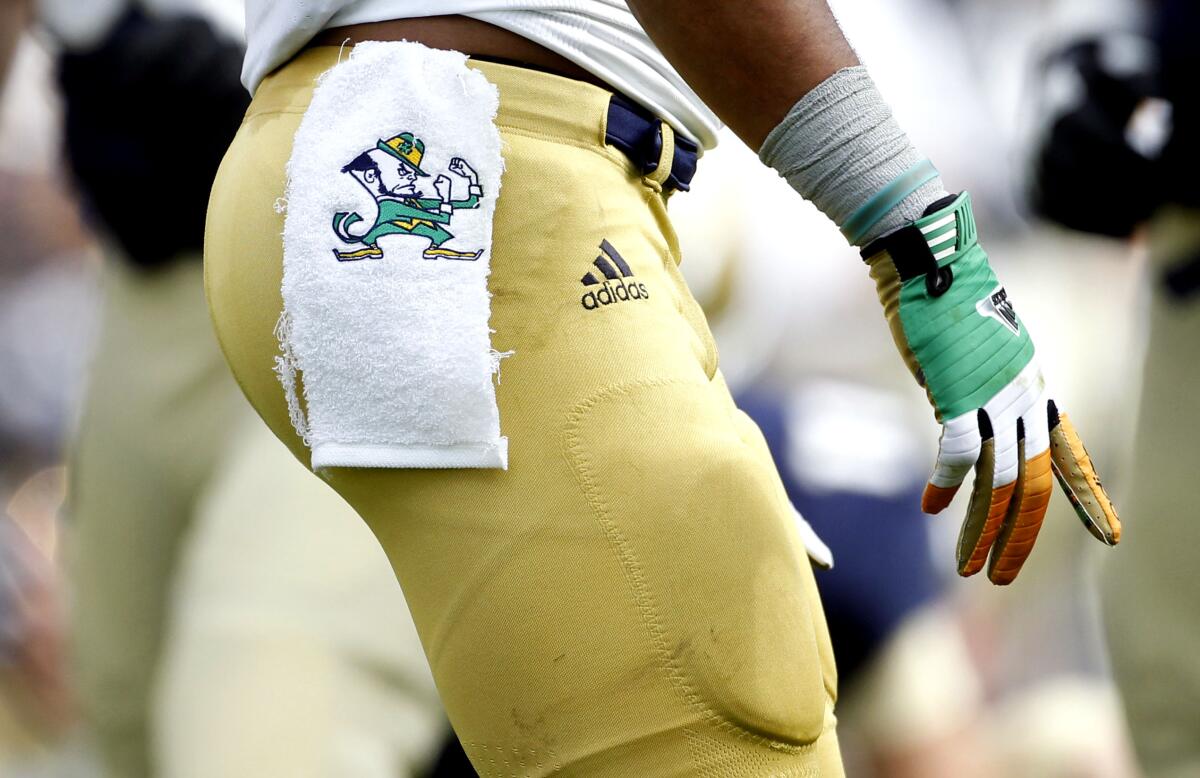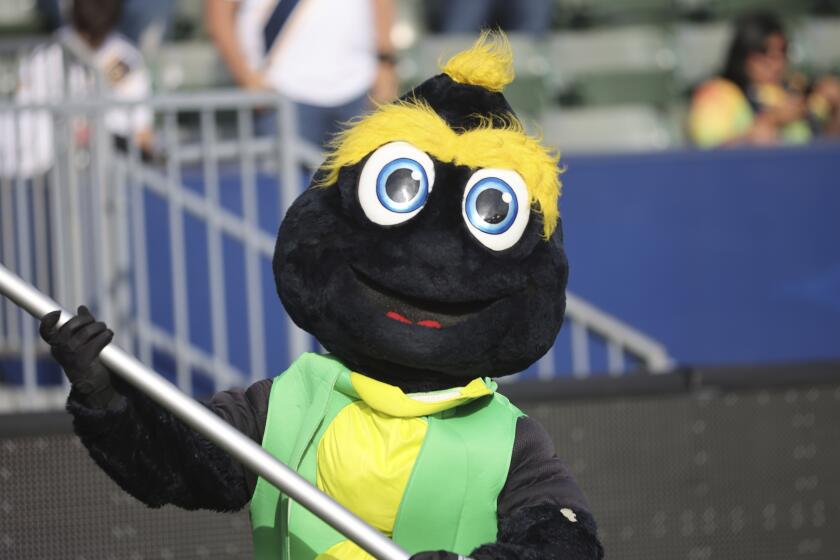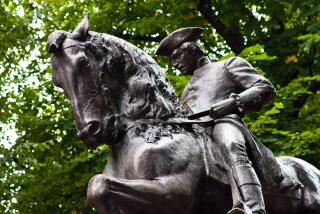Notre Dame defends Leprechaun after it is ranked among most offensive mascots

- Share via
Notre Dame is offended.
The offense?
Being called offensive.
Participants in a survey published Wednesday on the Quality Logo Products Blog ranked the Fighting Irish Leprechaun as the fourth most offensive college mascot in the country, behind Florida State’s Osceola and Renegade, San Diego State’s Aztec Warrior and Hawaii’s Vili the Warrior (who was never an official mascot and is no longer affiliated with the school).
In a statement to the Indianapolis Star regarding the survey, Notre Dame expressed displeasure with being associated with those teams and others like them.
“It is worth noting ... that there is no comparison between Notre Dame’s nickname and mascot and the Indian and warrior names [and] mascots used by other institutions such as the NFL team formerly known as the Redskins,” the school stated. “None of these institutions were founded or named by Native Americans who sought to highlight their heritage by using names and symbols associated with their people.”

The statement added: “Irish-Americans — including those at Notre Dame — again have turned back on former oppressors as a sign of celebration and triumph. In both the upraised fists of the leprechaun mascot and the use of the word ‘fighting,’ the intent is to recognize the determination of the Irish people and, symbolically, the university’s athletes.”
But some people think the Leprechaun should be given the same treatment as other controversial mascots, such as those depicting Native Americans.
“Many Irish-Americans are not offended, but many are,” ESPN’s Max Kellerman told the Wall Street Journal in 2018. “Should that also change? The answer is yes! Unequivocally yes. Pernicious, negative stereotypes of marginalized people that offend, even some among them, should be changed.”
According to Notre Dame’s website, no one knows exactly how the Fighting Irish nickname came about. While acknowledging “the term likely began as an abusive expression tauntingly directed toward the athletes,” the site states that “the most generally accepted explanation is that the press coined the nickname as a characterization of Notre Dame athletic teams, their never-say-die fighting spirit and the Irish qualities of grit, determination and tenacity.”
The website also states that the Leprechaun became the official mascot in 1965 “in keeping with the nickname Fighting Irish and the Irish folklore.”
The online survey asked 1,266 people around the country to evaluate 128 mascots.
For National Mascot Day, take a look at some of California’s quirkiest mascots.
The list of most offensive mascots, which has since been removed from the Quality Logo Products Blog site, was rounded out by Oklahoma State’s Pistol Pete, West Virginia’s Mountaineer, Nevada’s Hey Reb!, Arizona State’s Sparky the Sun Devil, New Mexico State’s Pistol Pete and Virginia’s Cavalier.
Other lists remain, though, including best mascot (Northwestern’s Willie the Wildcat, with UCLA’s Joe and Josephine Bruin at No. 10), worst mascot (Oklahoma State’s Pete Pistol), sexist mascot (Willie from Northwestern again) and unsexiest mascot (California’s Oski).
More to Read
Go beyond the scoreboard
Get the latest on L.A.'s teams in the daily Sports Report newsletter.
You may occasionally receive promotional content from the Los Angeles Times.











